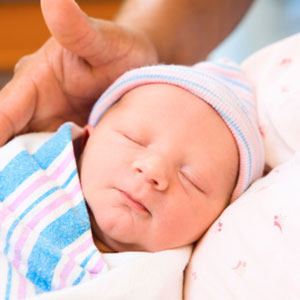 Did you know that Dr. Daniels and Dr. Nicole are trained to do Craniosacral Therapy on both Prenatal women and infants/toddlers?
Did you know that Dr. Daniels and Dr. Nicole are trained to do Craniosacral Therapy on both Prenatal women and infants/toddlers?
Craniosacral therapy (CST) is a relatively new treatment that can be applied to infants who’ve experienced head trauma and injuries. It’s often used for infants who underwent a difficult delivery which resulted in birth injuries, but it’s also effective for an array of other common problems that babies may experience, including nursing and feeding problems, colic, teething issues, and more.
About Craniosacral Therapy
According to the American Cancer Society (ACS), CST involves massaging and touching the the bones around the skull in order to minimize pain, promote growth, and help babies recover from birth trauma. It helps by relieving the pressure and tensions in the baby’s body. Physicians and therapists who specialize in CST state that there is a link between the lower part of the back to the fluids in the head. Since these two areas are connected, they control a lot of the body’s actions. With CST, these areas can be massaged to reduce blockage and normalize the body.
CST is also believed to relieve headaches, eye problems, hyperactivity, jaw issues, lack of coordination, and more. For adults, ACS suggests that it’s a good form of therapy for cancer patients.
Why Infants Have Cranial Injuries
During birth, infants’ skulls change to fit through the mother’s pelvis. The cranium bones may override each other in order to accommodate the birth process. Known as compression/decompression, it’s a normal process, and the bones usually go in back in place naturally. However, in some instances, especially if an infant is pulled too harshly, unnatural damages may occur to the bones, and in turn they may fail to heal properly. As a result, it can lead to a host of problems, such as motor impairment, breathing problems, digestive issues, and more.
Infants who are delivered via C-section may also be at risk for cranial injuries. In fact, studies suggests that babies born via C-section have more abnormal craniosacral evaluations when compared to infants born via traditional delivery. This may be in part due to the C-section experience being more abrupt. In addition, when babies are delivered via C-section, they don’t go through the normal process of the cranial compression/decompression, which can result in skull constrictions.
Feeding Issues
Infants who cannot or are unwilling to nurse can greatly benefit from CST. However, before starting therapy, a complete evaluation by the baby’s pediatrician needs to be carried out determine what’s causing the feeding problem. Common issues are problems that arise due to birth injuries, congenital issues, neurological problems, an/or after effects of drugs used before the infant’s birth.
In some cases, an infant could have been fed artificially with tubes or other means that created an aversion to feeding. It’s important to look into all aspects of the baby’s health when looking for the cause of breastfeeding problems.
If none of the aforementioned problems are relevant to your baby, then trauma surrounding the birth may be the cause. Birth trauma can easily cause damage to the baby’s head or spine. As mentioned earlier, a difficult traditional birth, a C-section birth, the use of a vacuum extractor or forceps, being delivered in the breech position, or a infant with an unusually large head are common reasons to indicate that birth trauma has occurred. These kinds of injuries during birth can result in pressure being placed on cranial nerves, particularly the nerves that control the mouth.
CST can also be beneficial for babies who do not open their mouth up enough to properly latch on during feeding. When this occurs, it may be possible to help by asking a physician or therapist about proper positioning during feeding to help the baby latch on However, if proper techniques do not remedy the problem, CST may be beneficial
Cranial Issues
As mentioned earlier, infants may experience injuries that fail to heal, especially during a traumatic delivery. However, studies suggest that if the infants who get CST, especially during the first weeks of life, have a good chance of the treatment being effective in healing misplaced cranial bones.
Other conditions that CST can help treat include:
- Vomiting
- Seizures
- Fine motor skills problems
- Torticollis
- Down’s Syndrome
- ADD or ADHD
- Erb’s palsy
- Colic
- Klumpke’s palsy
- Reflux
- Constipation
- Teething problems
- Acid reflux
- Misshapen head
- Ear pain
What Happens in a Typical CST Session?
In a typical pediatric CST session, infants are generally placed on massage table, in the therapist’s lap, or in the parent’s lap. The goal is to first ensure that baby is as comfortable as possible. Afterwards, the treatment portion of the session typically consists of hand-on, rhythmic massages across the baby’s skull, jaw, mouth area, and temples.
The massaging tends to be light; it will generally never cause any pain to the infant as no manipulation is ever used. Typical sessions last anywhere from a half-hour to an hour, depending upon the therapist and the issues the baby is having.
What Happens After a CST Session?
Many infants will sleep for quite a while after a session, which is normal. Sometimes, infants may smile more often, and in turn, may also cry more often after a session, which is also considered normal. This usually subsides within a few days.
As part of a child’s chiropractic check up, we do craniosacral therapy as needed. Typically appointments last 20-30 mins.
Call us to schedule your prenatal or infant chiropractic check up including craniosacral work.
